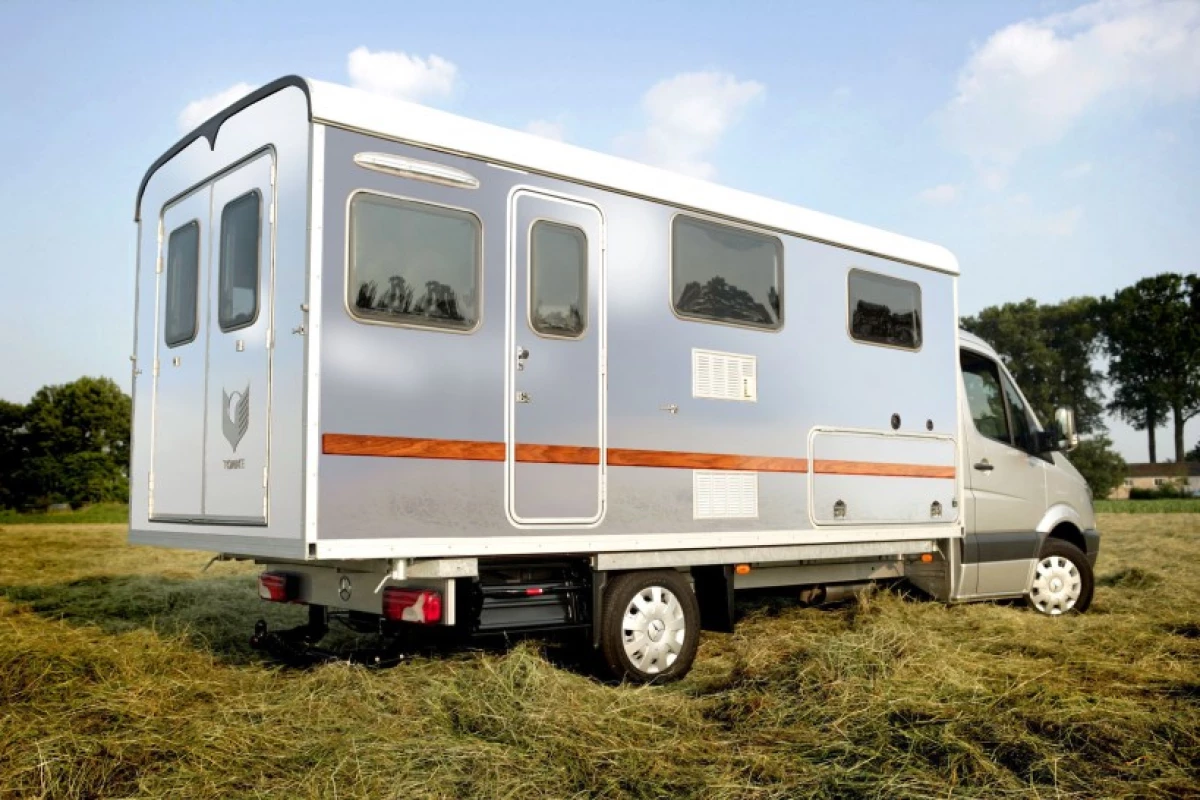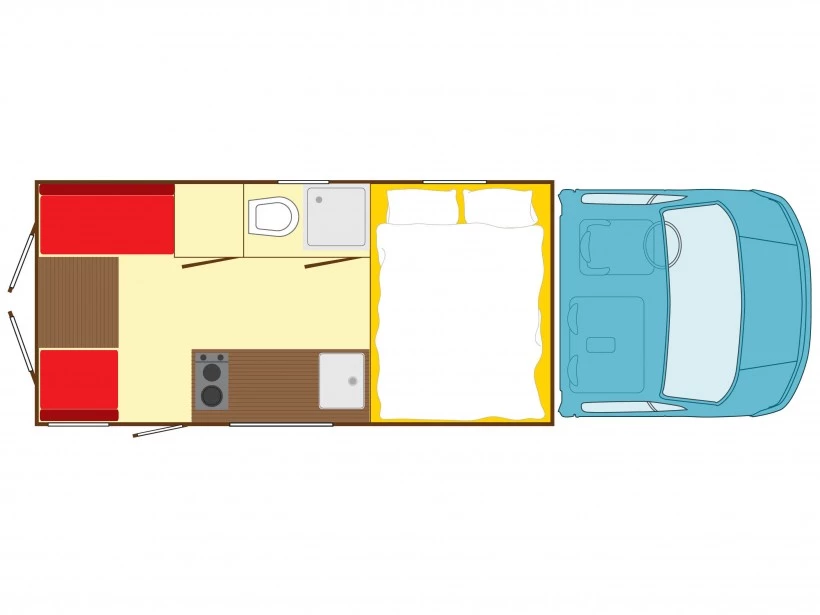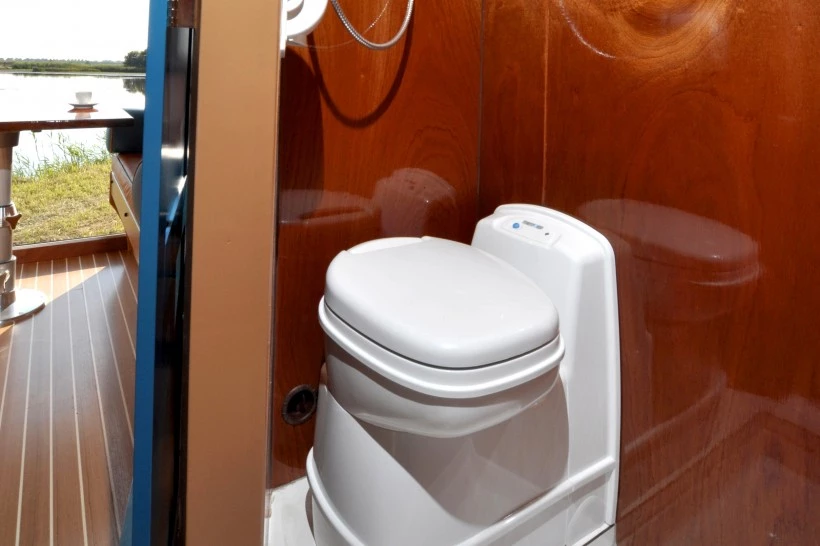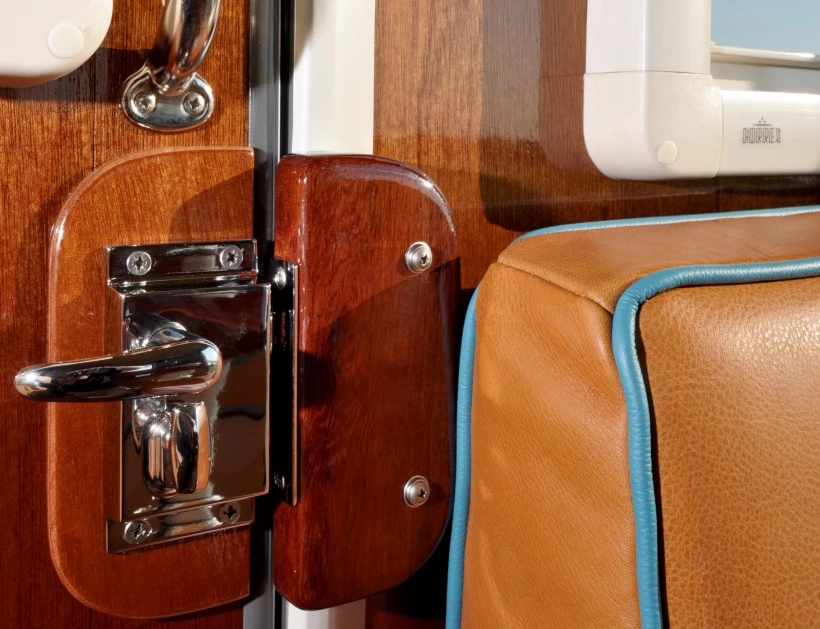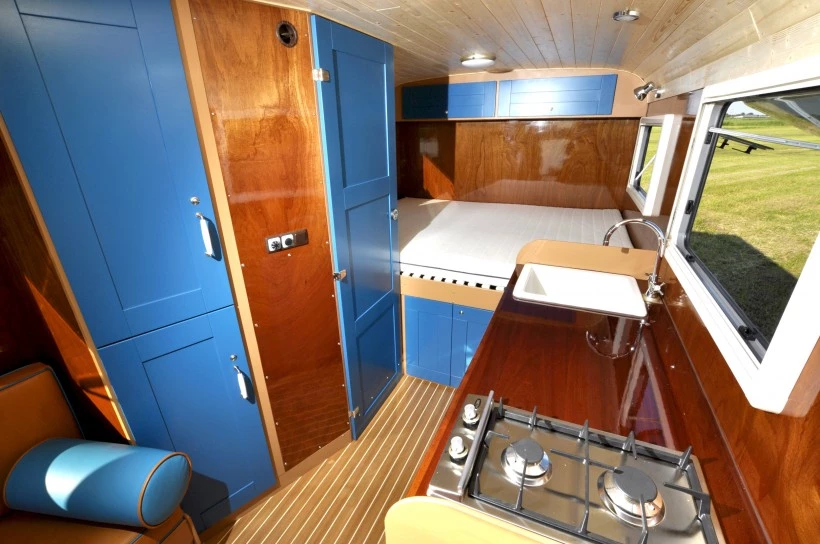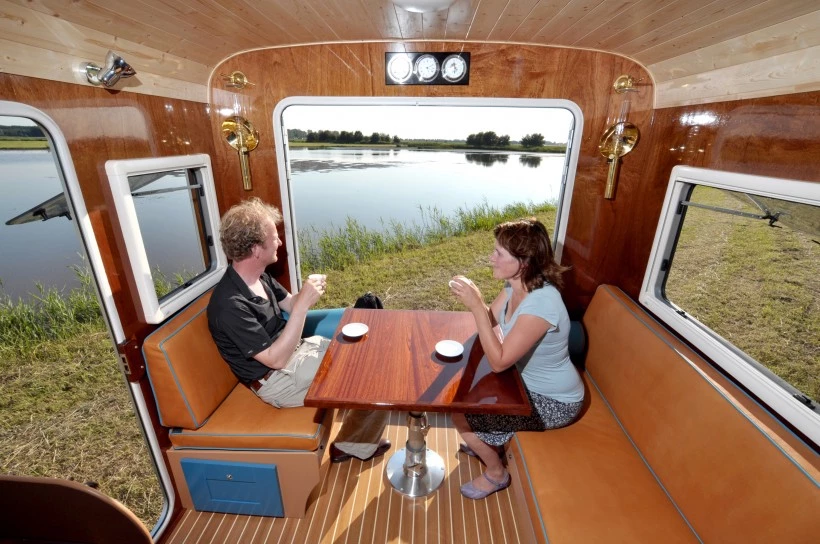The Tonke Fieldsleeper International is one of the latest camping vehicles making its way to the road. Tonke rips out the loud generator and liquid propane systems and replaces them with a full solar array. The motorhome is aimed at providing full comfort on all types of trips, even extended, off-grid stays in hot weather.
The Fieldsleeper International, which was initially called the "Desert Yacht," becomes the largest member of Tonke's Fieldsleeper line. Tonke's smaller Fieldsleeper campers offer solar systems optionally, but the International is equipped with a standard 400 W roof-mounted solar-panel array, 2.6 kWh, 440 Ah AGM battery bank, 3 kW inverter and 1.4 kW charger. A color control panel displays information about the state of battery charge, solar panels, inverter, etc.
The solar system feeds equipment like the 250-liter (8.8 cu ft) double-door refrigerator/freezer, induction cooktop, interior LED lighting and even the air conditioning system. The heater and boiler run on diesel power supplied by a dedicated 30-liter (8 gal) tank.
"We didn't want to use LP or LPG (liquid propane gas) because of lack of availability in remote areas and because of certain dangers involved," the Dutch company explains. "A large solar array provides lots of electricity efficiently stored in large battery banks."
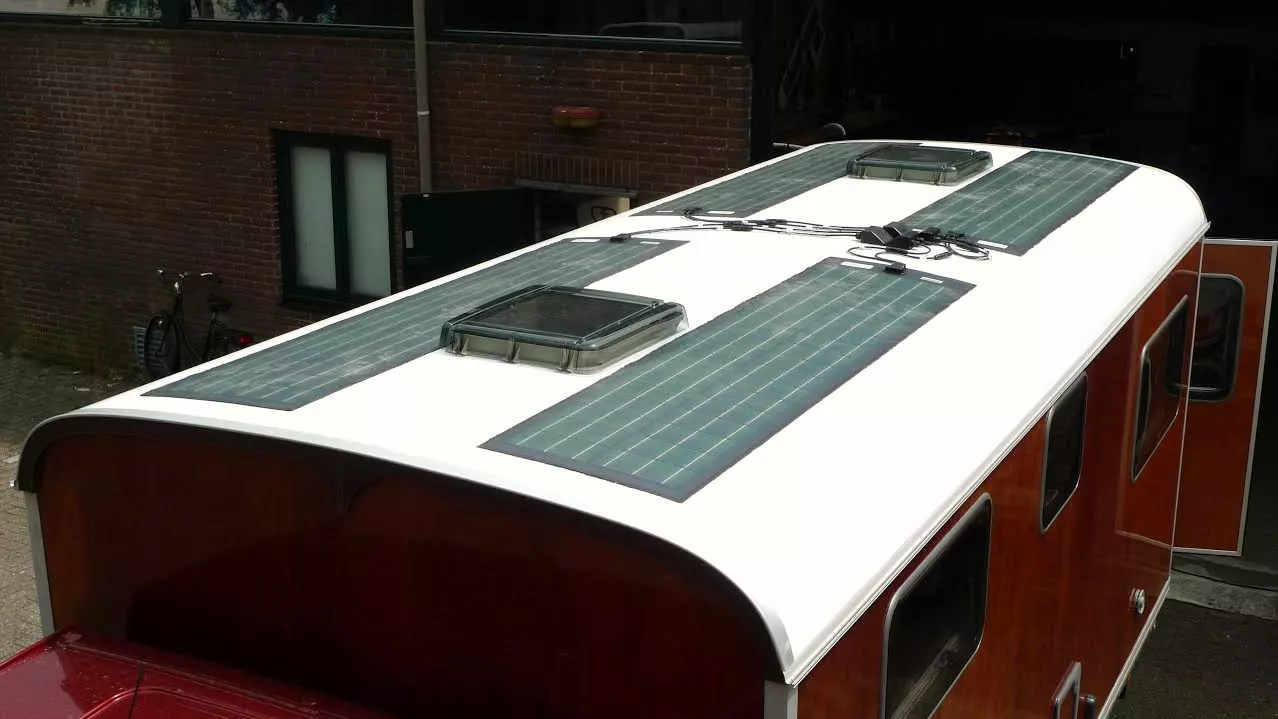
Tonke feels that the 400-watt solar system will provide ample power to reliably run the refrigerator, lighting and cooktop, but of course this will depend on usage, weather conditions and how long the travelers remain off the grid in one place. The Fieldsleeper International's batteries also charge off the engine during travel, and campers can idle the engine at camp for a few hours to charge them. Tonke considers this a quieter, cleaner, more integrated solution than running a separate generator, and it's a strategy that has been employed by other manufacturers, such as EarthRoamer.
The air conditioner can run for short periods with the standard solar system, but Tonke suggests that those that want to run it during extended off-the-grid periods upgrade to the available 600-watt system with 5.8-kWh lithium-ion battery storage. This system provides the added power needed to run the air conditioner for up to about 10 hours.
We're familiar with Tonke's rustic, all-wood campers, but the Fieldsleeper International debuts its new aluminum-panel skin, which covers the mahogany paneling inside, giving the design more of a modern campervan look. Tonke says the aluminum requires less maintenance than the real mahogany body, which is still available as an option. A bit of wood trim on the aluminum shell lets you know it's a Tonke.
Inside, the International is set up like smaller members of the Fieldsleeper series. Its increased length, width and height open up the interior a bit and allow it to sleep and seat up to five people, as opposed to the three-person sleeping and four-person seating limits on smaller Tonkes.
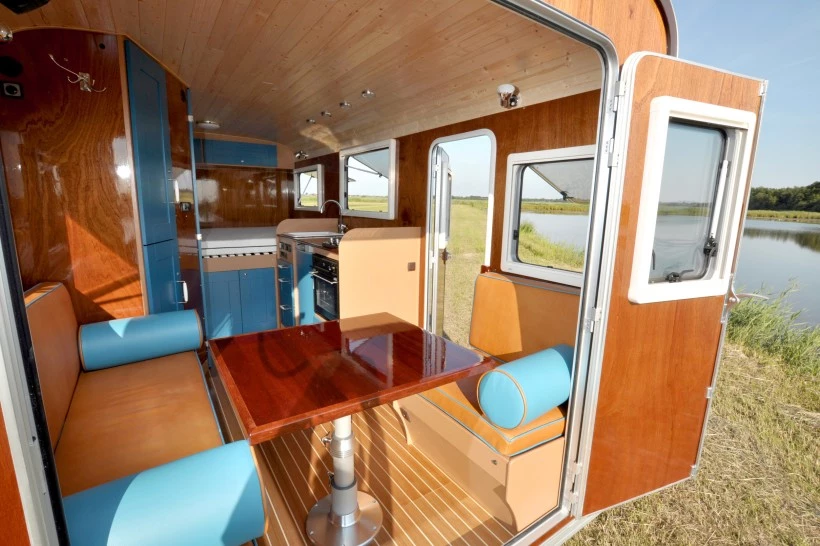
As in other Fieldsleepers, the International's double rear doors open into a living area with fold-down table and cushioned bench seating. The dining area converts into a two-person bed, and two to three people can slide onto the behind-cab bed on the other end of the cabin. The kitchen area is sandwiched between the dining area and the main sleeping area. It includes the 200-liter (7 cu ft) compressor fridge with separate 50-liter (1.8 cu ft) freezer, two-burner induction cooktop, sink with hot/cold tap, and chrome-handled drawers.
Directly across from the kitchen unit is the washroom with shower, sink and Thetford C200 cassette toilet. To support its extended-trip mission, the Fieldsleeper International has two water tanks carrying 68 gallons (260-L), nearly double the water capacity of the other Fieldsleepers.
The new camper is available only on the Mercedes Sprinter 519 CDI 5-ton dually chassis with 190-hp/325 lb-ft 3.0-liter turbo diesel engine and 7G-tronic automatic transmission. The cab has seating for three. While it doesn't look quite as big, bad and burly as some other camping vehicles we've covered, Tonke considers the Fieldsleeper International an expedition vehicle and offers it in 4x4, as well as 4x2. The camper box is built to be separated from the truck in about 10 minutes with the available automated hydraulic system. It can stand on its own, and the truck can be used for other purposes.
Tonke is finalizing its Fieldsleeper International prototype and plans to continue testing for the next few months, starting production sometime after Northern Hemisphere summer. The model will be offered in US 110-volt and European 230-volt specs, starting at US$192,000 with the Mercedes Sprinter base included (about $141K for just the camper). The company told us that it already has a waiting list.
Source: Tonke Campers
